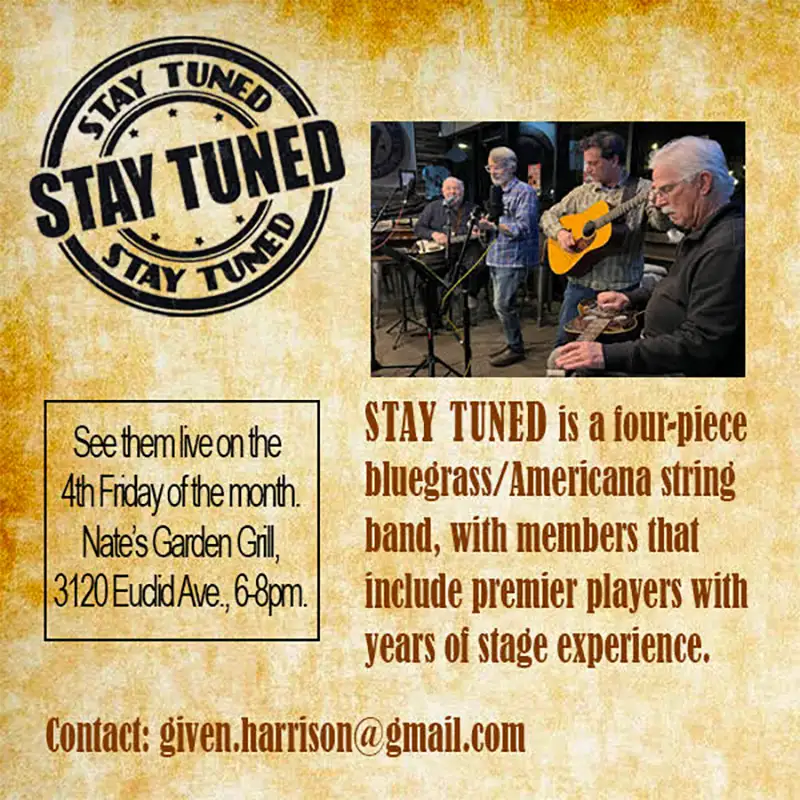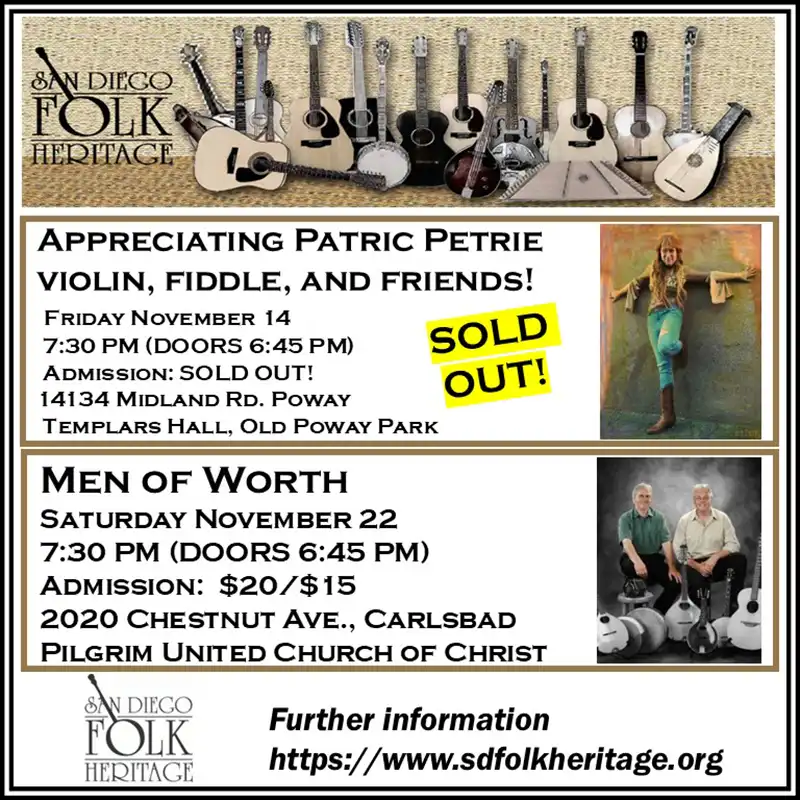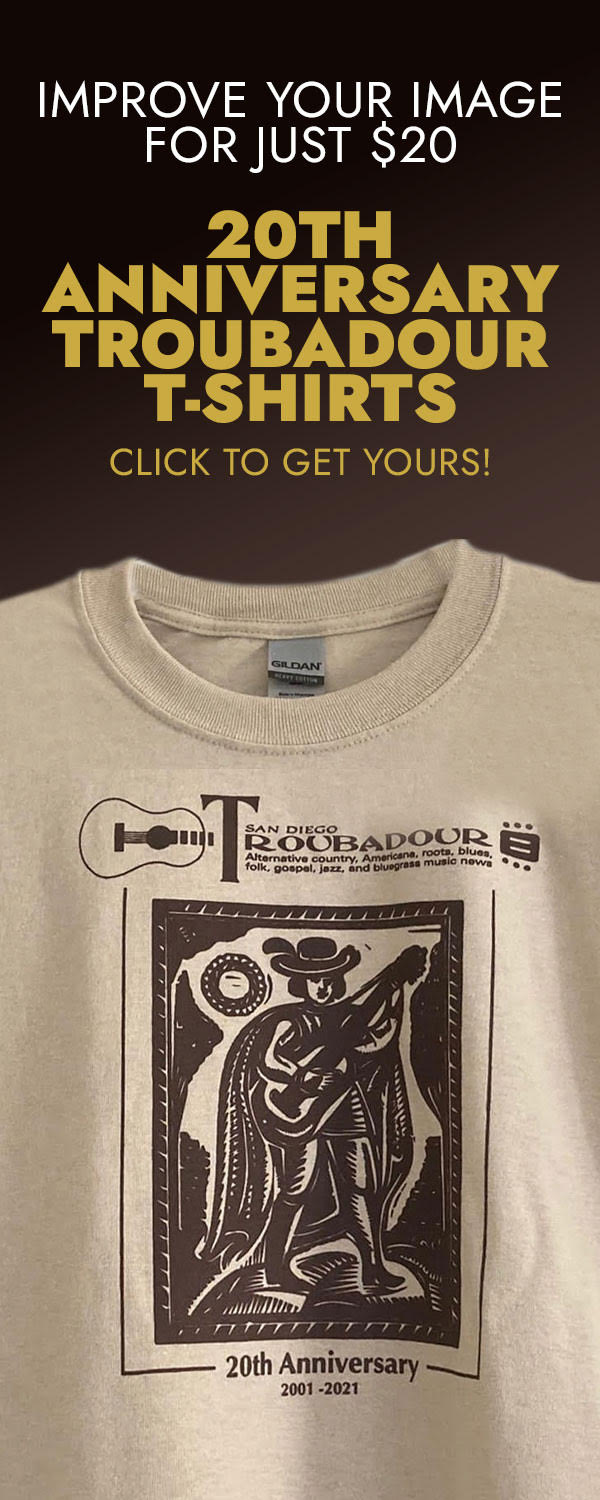Featured Stories
Daniele Spadavecchia: San Diego’s Italian Gypsy Swinger
The menu for an Italian meal must be the making of a take-no-prisoners, true believer gastronome. Wine flows abundantly, while course after course lands on your table. There’s the antipasta, savory suppa, and fresh insalate, then comes the tortellini, ravioli, or other pasta. And that’s all before the main dish of fish or lamb. And don’t forget the gelato and café macchiato at the end to top things off.
Italian-born Daniele Spadavecchia takes a similar approach to his music. It’s a musical feast that he calls Sicilian Swing. He takes a platter or two from the Rat Pack, particularly Dean Martin and his Italian-themed pop hits. He adds a bit of moxie from Louie Prima and his combination of old time New Orleans jazz and rock and roll. He also brings to the table a few old Mediterranean folk songs and the pop music of Italy from recent decades. Finally, he holds it all together with the beauty and passion of Django Reinhardt, the man who set the world on fire in the 1930s with his guitar and Gypsy jazz.
For the past four or five years San Diego has enjoyed the sounds of Spadavecchia and his Sicilian Swing. He performs throughout southern California, but if you were to define his regular stomping grounds, it would be Little Italy, the one-time fishing village of Italian immigrants that has been transformed into the tony district of cafes and restaurants north of downtown San Diego. He performs solo gigs weekly at Zia’s restaurant on India Street. The Italian Festival and Sicilian Festival that fill the streets of Little Italy with overflowing crowds every year also include Spadavecchia on their performance schedules.
Before we go on much longer, a brief note: If you’ve read the Troubadour with any regularity, you may have noticed that we are an incestuous bunch here, many of us writers being musicians who are writing about other musicians. So in full disclosure, I have played some gigs with Spadavecchia, going back a few years now. And yes, that’s me, snap brim cap and grey goatee, with my bass in a couple of the videos you might see on his website. Also, as I know him well and consider him a friend, I will dispense with the usual journalistic practice of referring to the subject of this profile by his surname.
Daniele grew up in Alessandria, a small berg just south of the Italian Alps. He spent about 15 years performing and teaching in Italy before moving to the U.S. He first lived in New Orleans for a few years, but Hurricane Katrina sent him packing to somewhere with fewer storms. After a brief time in Arizona, Daniele and his wife, Tracey, moved to San Diego. Like 87.3% of the musicians in this town, he lives in North Park, close to New Expression Music (formerly Old Time Music), where he teaches guitar. With his students, he specializes in a number of guitar styles, from Jimi Hendrix, to swing, to Chicago blues. He’s got the good looks of a young Marlon Brando, with hair that looks like it’s just been mushed after a good combing. He performs solo, but also plays with a duo or trio as well. The rhythm guitarist often found at his side is Jason Durbin, and Jeremy Eikam plays the string bass with Daniele. By the end of this month Daniele’s new CD be out.
A bit of his northern Italian accent comes through as he sings. His voice is direct and forceful, yet he has an easygoing approach. You might think that he sounds a bit like Louie Prima, but without the Vegas legend’s wildness. He learned to sing while performing with a cover band in Tuscany. He says, “Doing background vocals taught me a lot. I learned how to control my voice, control the volume, and hit the notes solidly.”
As was already mentioned, a great deal of the sound of Daniele’s Sicilian Swing is that of Django Reinhardt. Besides playing a number of the Gypsy’s tunes, the genius of Reinhardt’s guitar — from his brooding sensitivity to his rapid fire licks and arpeggios — informs Daniele’s playing. Like Reinhardt, he plays the large-bodied style acoustic favored by Reinhardt and plucks the strings with a bone-hard plectrum, reproducing Reinhardt’s loud clear notes.
He plays in the Gypsy style with such effectiveness that it might seem as though he grew up playing Reinhardt’s music, but that is not the case. His early years were spent playing pop, rock and roll, and blues. First picking up the guitar when he was 11, his interest in the instrument began to take hold when he turned 16. “It was a natural progression,” he says. “I’d grown, and when I turned 16 the guitar started to fit my hands.” Self-taught, he learned chords and licks from Led Zeppelin and other recordings.
At 20 he decided that the life of a professional musician was meant for him. Like so many other 20-year-olds the world over, Daniele played in a band, a rock band that covered the hits from such groups as the Police and Led Zep. His inspiration to dedicate his life to music came the night he saw Phil Guy, Buddy Guy’s brother and fellow blues guitarist, at a performance in Daniele’s hometown. He remembers, “I wanted to talk to him, to Phil Guy, so I met him at the bar. I told him that we had a band, that we played music. He said, ‘I’m going to call you on stage.’ So during the next set he called me up on stage. I wasn’t a blues player, but right there on the stage I made up a blues song. After the show Guy told us that in three years we would be blues players! That did it for me. I just knew music was for me.”
He made a new commitment to the guitar, taking lessons from his uncle and learning the basics of classical music. Moving on to jazz and blues, he relocated to Genoa and began studies with Armando Corsi. He says that Corsci’s emphasis was not on technique, the actual moving of the fingers, but more on understanding scales, musical relationships, and theory. Thereafter he lived and performed in Tuscany and Rome, performing in a Pearl Jam tribute band and other pop, blues, and rock and roll ensembles. In Rome he began his career as a music teacher.
Loving American music, Daniele moved to the United States, landing where all American music started: New Orleans. Right away the change of scenery brought about a whole new take on music for him. “I was staying in a room in a house. I got out my guitar and something clicked. It was not just musical ideas. It was more than the music. It was the heat, the summer, the sweat,” he says. Every night he made his way to Bourbon Street to jam with the musicians and bands there. Within two weeks he had secured work of his own in the French Quarter, playing a solo gig for four hours every night.
It was at this time that Daniele’s development of his Sicilian Swing started to come together. He began playing rhythm guitar for Tony Green, an accomplished visual artist who is also an exceptional Gypsy jazz guitarist. Although Daniele was familiar with and enjoyed the music of Django Reinhardt — in Rome he had been a big fan of a Gypsy jazz band there and had even auditioned for them — he had not performed Gypsy jazz before. He says, “For me this was a new direction. I started getting excited again. Playing rhythm with Tony gave me a chance to sit and listen to what was going on, so I learned a lot. Also, it is extremely demanding music. So it was a great opportunity for me to soak up a lot.”
Moving on to performing Gypsy jazz on his own, Reinhardt’s music took hold of Daniele. “After I started playing Django, I couldn’t go back, back to the electric. I fell in love with the sound of acoustic music, the purity of the sound. I also learned to appreciate the beauty of the Django music. This style of music is known for the speed of the players, how fast they can play, but it’s also about the beauty of how you can play. Django played fast, but he also played some beautiful slow material, too.”
Soon after his immersion into Reinhardt, Daniele found inspiration from Renato Carosone, the man who mixed pop and rock and gave it an Italian interpretation. Daniele added tunes like “Volare” and “Quando, Quando, Quando” to his repertoire, tunes that we Americans associate with Dean Martin and Bobby Rydell. Over time Daniele has incorporated more and more Italian and Italian-themed music into his performances, arriving at the mix of his Sicilian Swing. “I started doing it, playing the Italian and the Django together,” he says. “Then I realized I had something unique.”








